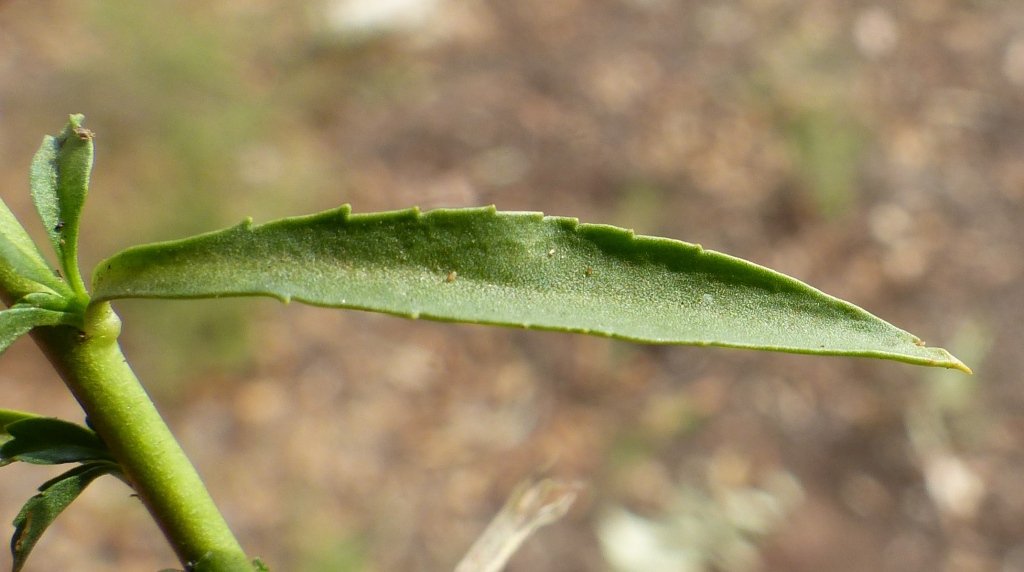Lepidium africanum
(Burm.f.) DC. Common PeppercressAnnual or perennial herb to 70 cm high; stems erect, not papillose or hairy. Basal leaves toothed (to very rarely pinnately lobed); stem leaves lanceolate, to 6 cm long and 5 mm wide, toothed or entire, margins glabrous or with sparse needle-like hairs. Inflorescence a dense elongating raceme. Sepals to 0.8 mm long; petals reduced, thread-like, shorter than sepals; stamens 2; stigma subsessile. Fruit ovate, elliptic or obovate, 2–3 mm long, 1.5–2 mm wide, without hairs, wings narrow, forming shallow apical notch; pedicels 2–3 mm long, shorter than or equal to fruit, minutely hairy on upper surface, somewhat flattened, mostly bow-shaped. Flowers most of year.
LoM, MuM, Wim, GleP, VVP, VRiv, MSB, RobP, MuF, GipP, OtP, WaP, Gold, CVU, GGr, DunT, NIS, EGL, EGU, HSF, HNF, OtR, MonT, VAlp. Naturalised all States. Native to Africa. Common weed of disturbed sites throughout Victoria but rarely in mountainous areas, the south-west and East Gippsland.
Similar to the native Lepidium pseudotasmanicum, but basal leaves not pinnately divided (only 1 specimen of over 100 examined had pinnate basal leaves) and leaves with margins glabrous or with scattered needle-like hairs (obviously longer than wide). In addition, L. africanum never has papillate stems. Although fruit shape is sometimes used to distinguish the introduced L. africanum from the native L. pseudotasmanicum, there seems to be great variability in this feature.
Entwisle, T.J. (1996). Brassicaceae. In: Walsh, N.G.; Entwisle, T.J., Flora of Victoria Vol. 3, Dicotyledons Winteraceae to Myrtaceae, pp. 399–459. Inkata Press, Melbourne.
 Spinning
Spinning




